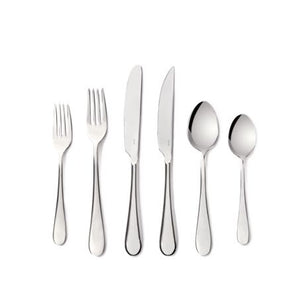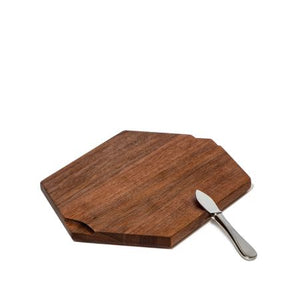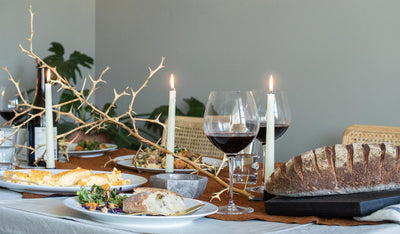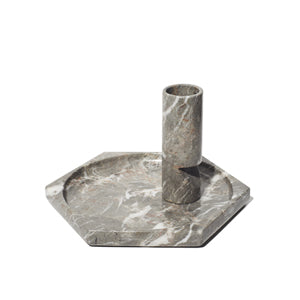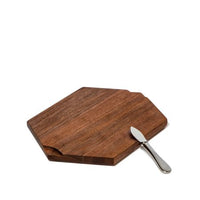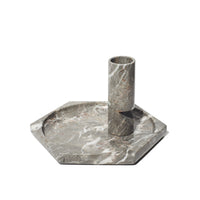
We love a burger as much as anyone, but….sometimes your grill deserves to experiment. Sometimes you want to go outside of your culinary box while also being outside.
Sear-iously (sorry we had to), grilling is the great culinary equalizer. The method’s as popular in America as it is in Spain, Korea and around the world. So why not approach your grill the way you would the rest of your kitchen? Our personal grill master and Co-founder Andrés Modak’s go-tos are less-common but no less delicious or easy. Our modular approach isn’t a recipe or a menu, so much as guides to how to grill seafood, how to grill fruit, and how to grill veggies and then how you can build a menu around their best attributes.
...
This time, he’s using the modular approach to rethinking “steak night”, how to grill romaine for the levelled-up caesar salad, and a unique grilling idea for summer stone fruit (grilled cherries—it’s not as wild as you think). The best part is you never have to go back inside once you knock out some minimal prep. So you can enjoy the great outdoors (and your friends and family) while you serve as chef. All you need is the confidence to riff away—and wood, gas, or charcoal.

Protein: Less-common cuts
Our rec: Tri-Tip
Why it works: “Butchery is something I spend a lot of time thinking and learning about,” might sound like a macho thing to say, but meat has been on Andres’s mind throughout his travels and nomadic upbringing. “Ask people in different parts of the world what cuts of meat they prefer and you’ll quickly learn that the nomenclature, and what gets them salivating, are dramatically different. My preferences are anchored in my Colombian roots and what I’ve learned from the true bovine experts and Argentina and Brazil. Having grown up across a few continents with a range of culinary traditions, I’ve always pushed to find exactly what I want, even if it means finding unique ways to translate cuts across languages and regional preferences. It’s amazing how each country has its own name for certain sections of the animal. From arguing about cuts in a grocery store in Sydney to using a mix of gestures and limited vocabulary at a butcher shop in Indonesia, my family and friends think I’m crazy—hopefully just until they sit down to eat.”
Today’s unsung hero is the Tri-tip. This cut is well known to Californians as the all-star of Santa Maria-style barbecue, the closest thing in the US to an Argentine parilla. It was actually created by the Spanish and Mexican ranchers in Santa Barbara County in the early 19th century. Unfortunately, this cut more commonly ends up ground into your burger meat, but not today. It’s a well-marbled tasty cut that shines when treated well. The key is being strategic—in Colombia, it’s the national favorite, known as punta de anca, and in Argentina it’s called colita de cuadril, where the secret is to leave the fat cap on, allowing it to essentially render and baste your beef in tasty goodness as you cook.

Technique: What’s great about this cut is that it’s a roughly two-pound triangle. Andres’s go-to recipes are simple: either just salt before grilling or try his grandmother’s marinade—olive oil, garlic, a fist full of whatever herbs you have on hand (rosemary, thyme, etc.), cracked pepper, a teaspoon of dijon mustard, a tablespoon or two of soy sauce, and absolutely no salt until later (it’ll toughen the meat). Allow it to marinate for 6 hours or overnight, then brush off the majority of marinade and pat dry, liberally sprinkle on kosher salt, and let it come up as close to room temp as time allows. Throw it on the grill at medium heat with the fat cap down to let it start to render, carefully making sure that fat doesn’t create a flare-up. Then turn every few minutes to give your ‘cone’ a nice even sear. Supervision is key: the myth of not moving meat does not apply here, because you want an even char and a perfectly toasty, crunchy fat cap, so plan for about 15-30 minutes depending on your grill, aiming for medium-rare (you can use the finger technique to test or keep an instant-read thermometer on hand). Let it rest for 10-15 minutes in tented foil, then slice it thin against the grain, to leave a strip of crunchy fat with every bite.

Our grill-master recommends: “Make friends with your meat man. Once you start asking questions, you’ll forge a relationship with your butcher because they have a natural curiosity of ‘wait, you use it for that?’ So often, what might be less common or even an off-cut in the US are prize picks elsewhere —and butchers are in on the secret (they’ll often snag them for themselves). Once you’re in good, dig into their preferences. Is it Brazilian picanha (the rump cap) or bavette/vacio (flap steak), bone-in or boneless short ribs on the grill? You might learn something delicious.”
Serve with: Not chilled, but a slightly cooled, less fruity, red with a little bit of bite, like a Syrah or Barbaresco that matches the savory flavor (our article on the wines you’ll want to drink all summer is filled with great, funky, summer-friendly options).

Side: Crisp and Charred Vegetables
Our rec: Romaine
Why it works: Grilling vegetables that have a high water content can sound a little washed up, but grill-masters know infusing smoky flavor isn’t just for carnivores. Less-than-loved lettuces, cabbages, and chicories (like romaine, endive, puntarelle) can be treated with as much reverence as a piece of steak and won’t wilt under the pressure. The endgame is an inverted version of romaine: crunchy edges with a slightly softer center that flips a Caesar on its head.
Technique: Put down the salt: the trick is to season your veggies post-cook to keep them from releasing moisture that could keep them from charring. Even zucchini will turn into sad steamed veg if you pre-season. Instead: get the grill very hot, brush the leaves with a little bit of oil, cook for 3-6 minutes on each side, until you’ve got nice char lines. Then dress with a classic profile: a Caesar or Caesar-like creamy anchovy vinaigrette packed with fresh herbs and lots of lemon, taking care to get into those nooks and crannies the char created. For an extra crunch: tear up some grilled bread that was brushed with olive oil and garlic for a more cravable crouton.

Our grill-master recommends: “The inclination is always that peak veggies don’t need much, but grilling certain vegetables actually amplifies their flavor and turns salad into something special. Another juicy veg that deserves its moment in the sun/sear: tomatoes. Pair them with crisp, un-grilled tomatoes, fresh basil and crusty, charred bread to soak up some of the juices, for panzanella-meets-pan con tomate twist”

Serve with: The last few summers have been all about hazy, unfiltered ales, and the trend makes a tasty match if you choose a hoppy, floral option that can stand up to the saltiness with a thirst-quenching flavor. Something like Hazy Little Thing from Sierra Nevada Brewing, or Built To Spill from Foam Brewers. Better yet, stop by your local bottle shop or brewery and get local with your craft. Tropical is the name of the game, strong citrus notes with a creamy mouthful make NE IPA's fan favorites with the craft beer crowd. Look for the words "double dry hopped (DDH) or "Hazy IPA". Don't be afraid if you see some floaties at the bottom of your glass, there's where the juicy goodness comes from.

Side: Stone Fruit and Spice Salad
Our rec: Cherries
Why it works: Maybe you've been grilling peaches for years and want to level up, maybe you read Part 1 and are ready for a new challenge, or maybe it’s so hot you only want to eat fruit—this is the dish for you. As a stone fruit (yes cherries are a stone fruit), they have all the perfect grilling attributes and are sneakily savory (hello, trail mix). Andres discovered their salty pairing potential at HaBasta, known for their creative approach to the freshest ingredients from the nearby Carmel Market in Tel Aviv. “After losing ourselves in the labyrinth of stalls, we turned and found this culinary oasis of tables at crooked angles spilling out into the street, with an incredible array of tantalizing specials scrawled on a chalkboard,” Andres said. “We were blown away by everything that we ate, but this one stuck with me. My riff grills the cherries to concentrate the flavor.”
Technique: Heating the cherries softens the insides and amps up their juiciness, while adding a dash of smoke for richness. If you have a mesh or small grate grill (like those used for yakitori), throw them right on. Otherwise use a basket or container that will save them from falling through, but provide nearly direct heat. Be sure to pit the cherries before (it's a necessary, yet slightly annoying step). Grill on high heat for just a few minutes (you don’t want them to char), dress with olive oil and coarse, flaky salt, then mix with chopped cilantro and super thinly slices of a medium-heat banana pepper or pepperoncini (the key is surprise hits of warmth, not overwhelming heat).

Our grill-master recommends: “I can’t stress the importance of high-quality olive oil and good salt as ingredients enough. When you aren’t using many components, there’s no room for a weak link, and the well-sourced and produced options bring something special to the party—good quality olive oil should provide that delightful tingling in the back of your throat.”
Serve with: The cherries don’t actually eat like a dessert, so pour a white that toes the line of dessert and refreshingly drinkable, say a not-too-sweet, not-too-dry Riesling, or Gewürztraminer.











